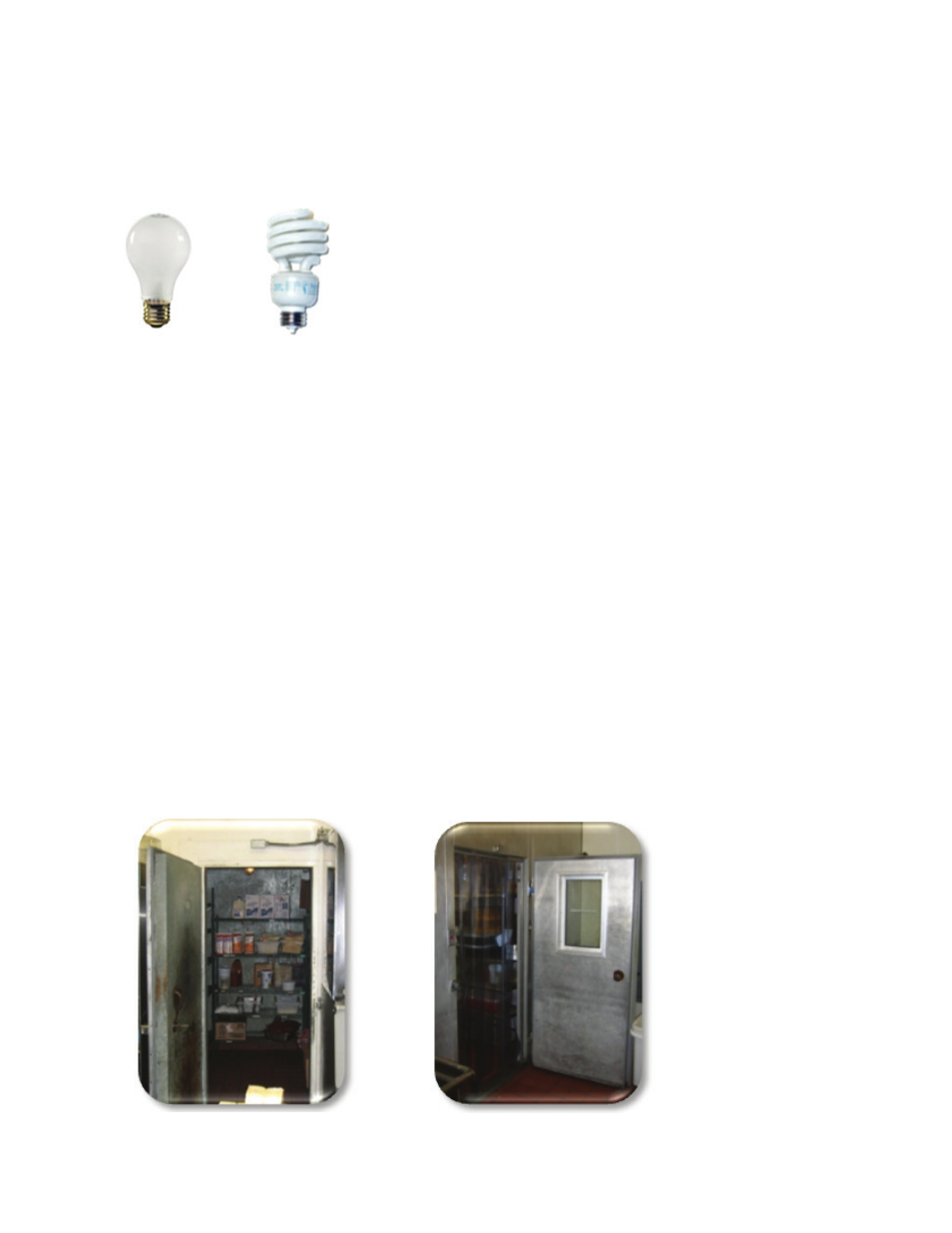Retrotec USACE User Manual
Page 263

Appendix D D133
D.7.10.2 Using Incandescent Lighting in Exhaust Hoods, Walk-in
Coolers and Even Dining Rooms, Instead of Compact Fluorescent
Lighting (Ineffi ciency)
Figure D218. Ineffi cient, incandescent lamp
(left) and compact fl uorescent lamp (CFL)
(right).
Compact fl uorescent technology has progressed to the point where it has over-
come the disadvantages that were present, compared with incandescent lighting,
when CFLs were fi rst introduced. Initially, CFLs provided poor color rendering
and were only available in a limited number of shapes, sizes, and socket types,
limiting retrofi t opportunities. Now CFLs compete favorably with incandescents
in color rendering and are available in a wide variety of shapes and sizes to re-
place incandescent lamps while generating far less heat and operating up to three
times more effi ciently (Figure D218). Compact fl uorescents typically consume
25–30% of what an incandescent consumes, and with comparable light output.
Most incandescent lamps used for general lighting can be replaced by com-
pact fl uorescent lamps. Look for CFLs with similar lumen outputs to the incan-
descent lamps you are replacing and color temperatures that work with other
lighting in the space. CFLs come in many different styles—globe, refl ector,
fl ame tip, pear—and many are dimmable as well. The annual operating cost
savings from replacing a 100 W incandescent lamp with a 23 W CFL is $60.
D.7.10.3 Increased Refrigeration Energy Use Due to Open and
Unprotected Freezer Doors (Waste)
Figure D219. Open walk-in cooler and freezer doors (left), strip curtains and automated door
closers (right).
